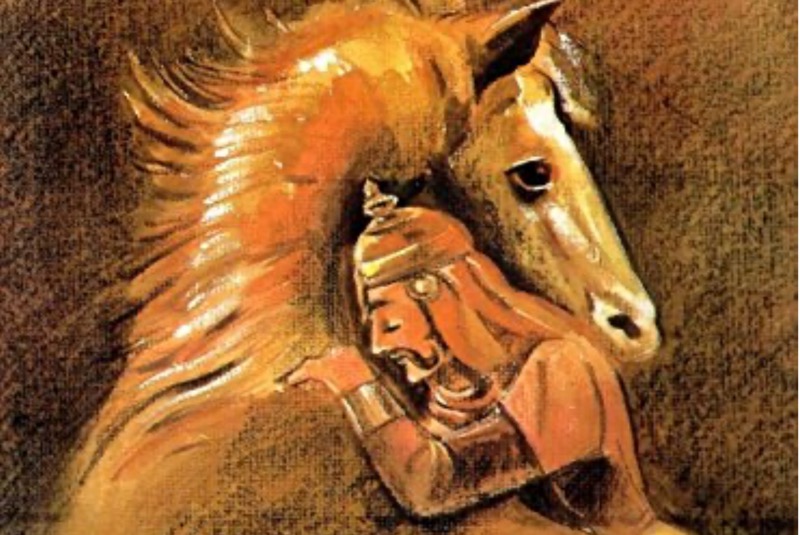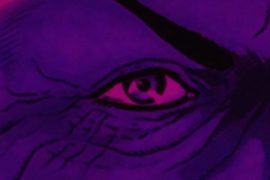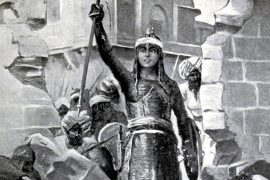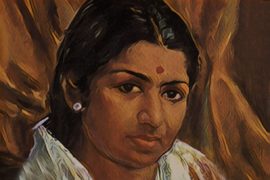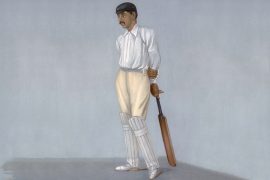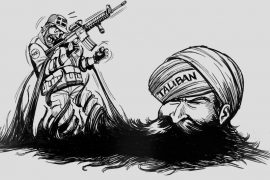The King and his horse
Caught in a dramatic pose
Chetak stands
left leg raised
nostrils flared
fully aware
of the regal hands
that lightly hold
the reins of power.Maharana Pratap Singh
heir to the sun sign
of the Kingdom of Mewar
stares ahead
with bronze eyes
at the well laid lawn
the cement benches,
the fountains playing
sweet soft music
to the young lovers
drifting hand in hand.
Among the ruins there
they steal a kiss
behind the Rana’s
royal metal back.
Centuries ago, a king had a horse that was more loyal to him than his brothers. Chetak, the horse, protected and saved the life of his guardian, the King of Mewar, Maharana Pratap Singh. The story of the two in the battle of Haldigarh is a story of courage, loyalty, and honour.
Rana Pratap took over the Mewar throne during political unrest. The Mughal emperor, Akbar, had captured Chittor, the capital of Mewar, during the reign of Udai Singh, Pratap’s father. A new capital was established in the city at the foothills of Aravali Hills, Udaipur.
Akbar, who wanted to rule over India, asked Mewar to recognise him as the emperor and accept his suzerainty. Pratap, who chose to retain Rajput’s self-respect and honour, remained firm in not bowing down to Akbar.
In 1573, after Pratap rejected six delegations to strike a peace deal, Akbar decided to take him on in an armed conflict. To prepare for it, Akbar won over nearly all of Pratap’s fellow Rajput rulers by offering them protection and safety for their kingdoms in return for their loyalty and support against Pratap. Unfortunately, even Pratap’s younger brothers, Shakti Singh and Sagar Singh, joined the alliance with Akbar.
On 3 May 1576, the Mughal army marched towards the village of Haldighati. Pratap Singh, ready for battle, waited at the neck of a pass with his closest ally, the glorious stallion Chetak, for the right moment to strike.
Chetak was dressed as regally as his master in his war armour. Adorned with a colourful, flexible armour, Cheras, the stallion, was masked under a fantastic elephant head look alike. Chetak’s armour was designed to terrify the enemies and protect him from the war elephants, assuming that an elephant would not harm another elephant.
Pratap sat steadfast on the horse with a sword in one hand and the crimson flag of Mewar, fashioned with the Sun God’s face, in the other. The battle of Haldighati yielded no results. “[I]n Haldighati, the imperialist power achieved nothing, and the Rajputs lost nothing.” However, Chetak’s story of bravery and loyalty became popular.
Chetak and Pratap had already sustained several wounds when they entered the heart of the Mughal army to fight Raja Man Singh of Amber, the commander of Mughal forces. Maharana Pratap fought Man Singh, who was on top of an elephant, from the back of the steed. The horse stood up to the elephant on its rear legs and Pratap lunged forward, piercing his sword through the Mahout’s chest. However, Man Singh had disappeared.
With the mahout dread, the unmanned elephant panicked; the broadsword attached to its trunk pierced one of Chetak’s hind legs. Unaware of Chetak’s condition, Pratap joined the rest of the army, and the horse, now only using his three legs, kept moving forward valiantly.
To protect Man Singh, the imperial army, with a Mughal officer, Bahlol Khan, charged towards Pratap. While Pratap beheaded Khan, he was in a compromising position, surrounded by his enemies.
Fortunately, with Chetak’s help, Pratap returned to the main body of Mewar’s forces. But he and Chetak had sustained injuries; Chetak had jumped a wide river only on three legs.
The Mughal forces could be heard charging from the rear. Once again, Chetak saved his guardian when they came face to face with Pratap’s opponent, Man Singh; however, this time, Maharana was injured and lost blood. Upon advice from his officer, Maharana made a tough decision to retreat. Taking cover, Pratap, along with a part of the Mewar army, disappeared into the hills.
Chetak, though he was seriously injured, delivered Pratap to safety; the injured Pratap fainted and fell off the horse. But after fulfilling his duty, Chetak succumbed to his injuries.
Maharana’s injuries were tended to, and he lived on and served for 25 years until his death at the age of 57 on 19 January 1597. The struggles between the Mughal Empire and Mewar continued with their successors.
While Maharana Pratap’s war conquests are well documented in history, the story of Chetak, his trusted pal, who accompanied him side by side on these pages as a symbol of courage, loyalty, and honour remains on the sidelines of history.
Oral histories of Maharana’s brave stallion echo through the streets of Rajasthan to this date, and his name is famous throughout the country. While several statues celebrate the partnership of the horse and his guardian, Chetak Smarak or Chetak Samadhi stands in Rajsamand District in Haldighati to commemorate the horse’s sacrifice. It is known to have been built on the spot where Chetak died, immortalising its memory.
-30-
Copyright©Madras Courier, All Rights Reserved. You may share using our article tools. Please don't cut articles from madrascourier.com and redistribute by email, post to the web, mobile phone or social media.Please send in your feed back and comments to editor@madrascourier.com

